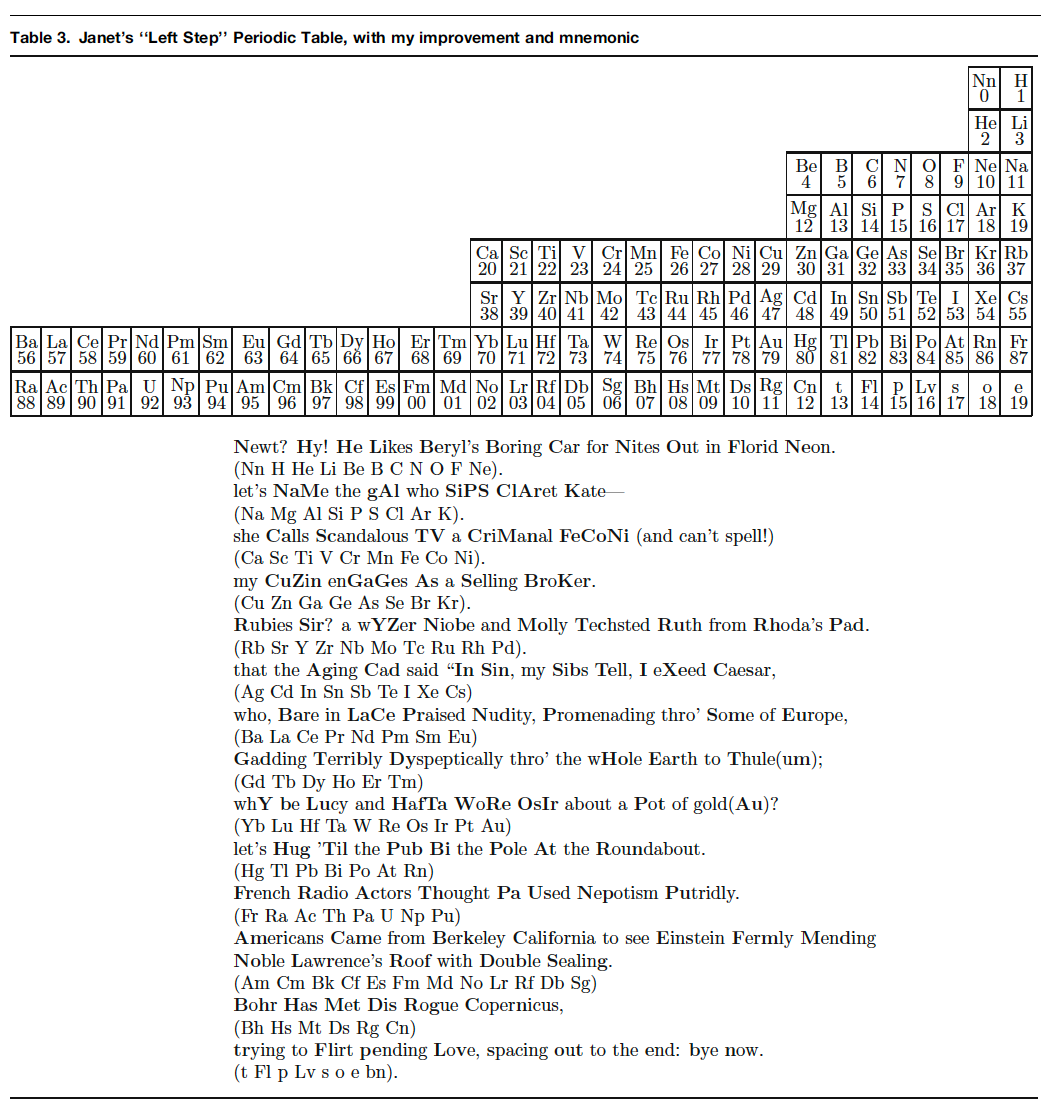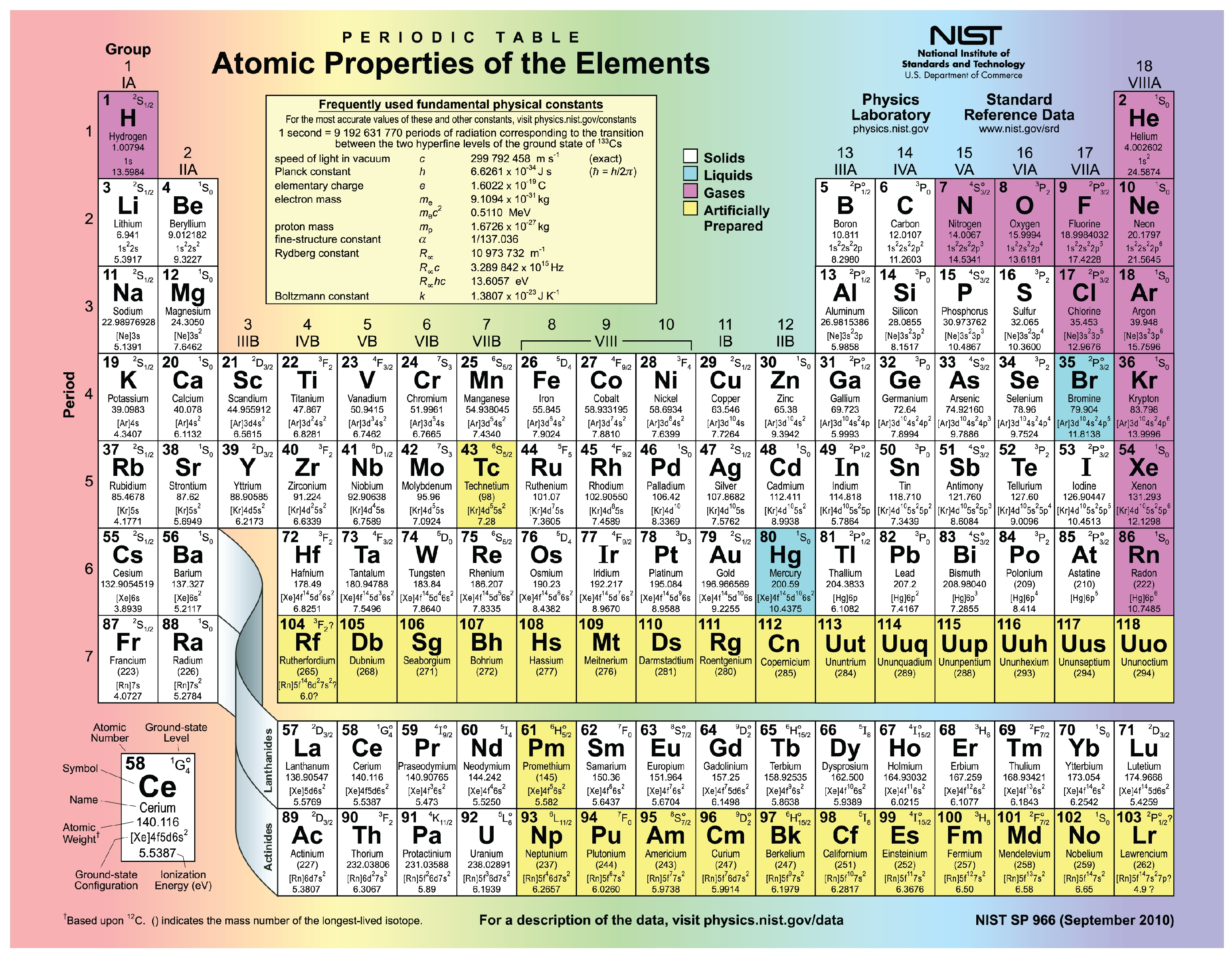The periodic table game available on this page is for entertainment purposes only, and should not be used to grade students on their knowledge of chemical elements. Easy Game Level. When shown an element name, find the corresponding element atomic number and symbol in the periodic table as quickly as you can! Medium Game Level. The group number in the periodic table represents number of valence electrons of the elements in a certain group. For example, all the elements in Group−1 have 1 electron in their outer most shell. Furthermore, what are the 7 groups of the periodic table? The periodic table of elements arranges all of the known chemical elements in an informative array. Elements are arranged from left to right and top to bottom in order of increasing atomic number. One number you will find on all periodic tables is the atomic number for each element. This is the number of protons in the element, which defines its identity. How to Identify It: There isn't a standard layout for an element cell, so you need to identify the location of each important number for the specific table. The number of elements on the periodic table isn't the only thing about the table to change in the past 20 years. The atomic weights of some elements on the table have also been changed. These changes were made by the International Union of Pure and Applied Chemistry (IUPAC), which is the organization that oversees the official periodic table.

An element refers to a substance made of atoms of the same kind. All the atoms in a particular element bear the same atomic number. Elements cannot be broken further into smaller substances using chemical reactions. However, they can only be transformed into other elements by nuclear procedures. The atoms in an element contain the same number of protons, but the number of neutrons varies. When the number of protons in an atom is changed, then the element changes.

Properties of Elements
Every known element has a name and a number, which are listed in the periodic table. The periodic table outlines each element’s electron configuration, the atomic number of the element, and the chemical properties of the element. The atomic number refers to the number of protons found in the atom of an element. Elements can be categorized into three major groups that include metals, nonmetals, and metalloids. The elements found on the left side of the periodic table are typically metals. While the elements on the right side of the periodic table are non-metals. Some elements like hydrogen and sodium are popular while others like dysprosium remain unknown because they are rarely used. Elements like copper, carbon, and silver have been in existence for thousands of years.
Current Number of Elements
The periodic table contains a total of 118 elements. Four of these were included on the list in 2016. These are Nihonium (113), Moskovi (115), Tennessine (117), and Oganesson (118). The first 98 elements listed in the periodic table occur naturally while the rest can only be found in nuclear accelerators and laboratories. Thirty-two of the 98 elements are in their pure form. The rest exist as compounds. Eighty of the natural elements are stable, meaning that they cannot be subjected to radioactive decay. Ten of the 98 elements only exist in trace amounts. Typically, all the elements of the periodic table with a higher atomic number than lead are unstable, thus subject to radioactive decay. Although several of the discovered elements exist naturally, only a few of these exist in their native form. Among the few are noble gases that do not form compounds easily, as well as metals like copper, silver, and gold. Non-metals that fall into this category include nitrogen, oxygen, and carbon. Elements that do not exist in their native form include alkali and alkaline metals as well as rare earth elements.
Rare vs Native Elements
Periodic Number 18
Rare elements are obtained through the radioactive decay of some common elements. For instance, francium results from decayed actinium. A number of the elements listed in the periodic table recently may have been produced through the decay of unknown elements that have been in existence for a long time. Native elements, on the other hand, are naturally occurring elements in an uncombined form. However, only a few native elements are found in compound form.



Periodic Number 13
The Future of the Periodic Table
Six new elements were discovered between 2012 and 2016, filling the gaps that were remaining at the bottom of the periodic table. The year 2019 marked the 150th year since the table was established. Walther p38 serial numbers lookup. As the chemical properties of known elements continue to change, new discoveries of elements continue to occur. Most of the periodic table changes will result from human-made elements made by scientists using high energy accelerators. However, unlike natural elements that can be handled, these synthetic elements are likely to be unstable, thus decaying quickly. Nonetheless, there is a possibility for more exciting discoveries in the atomic world.
